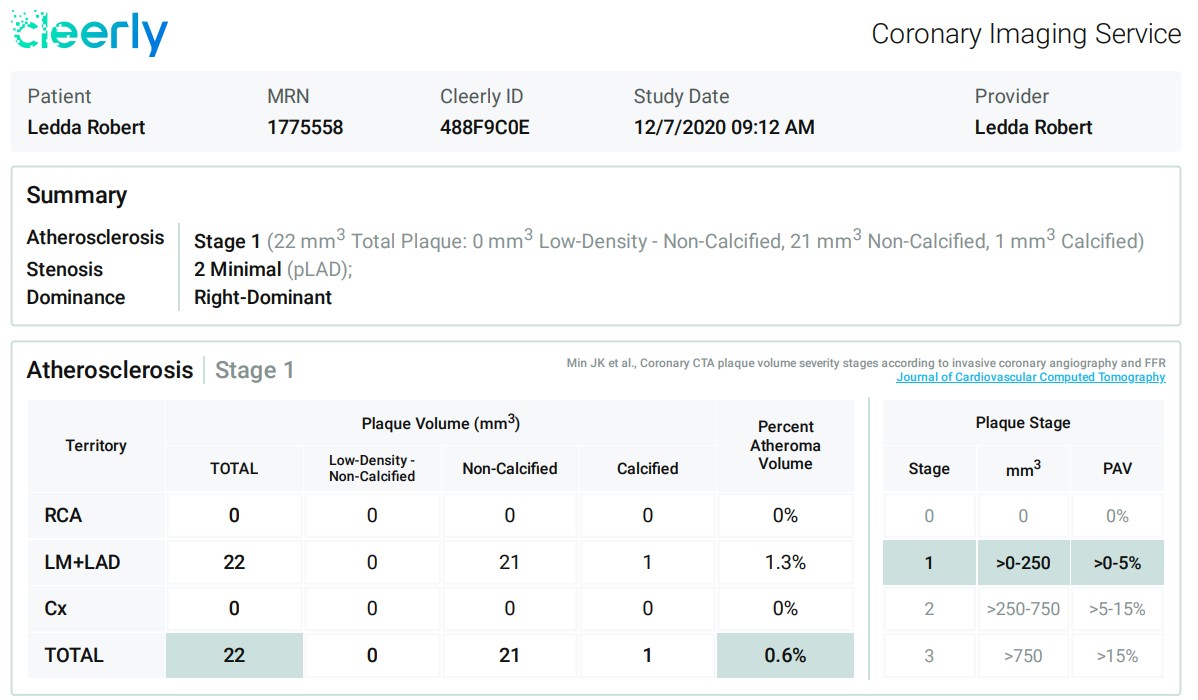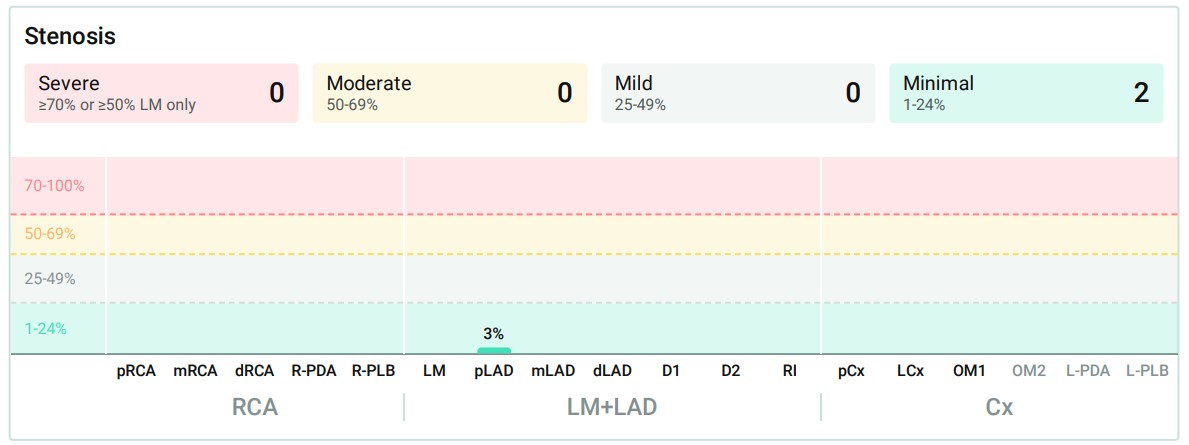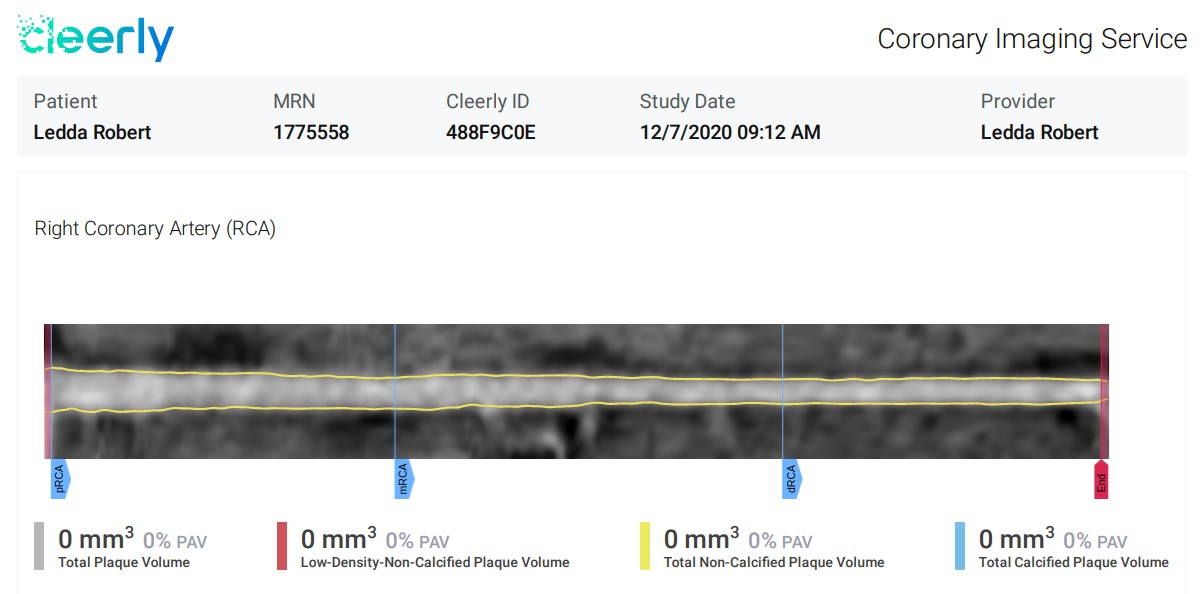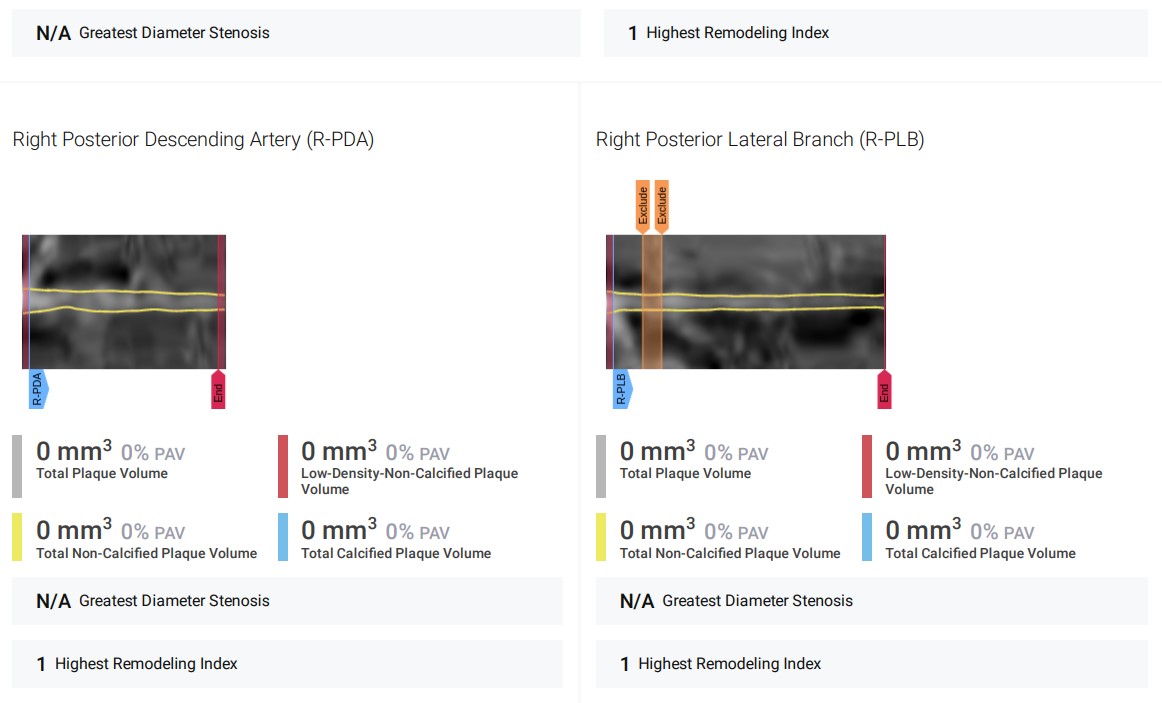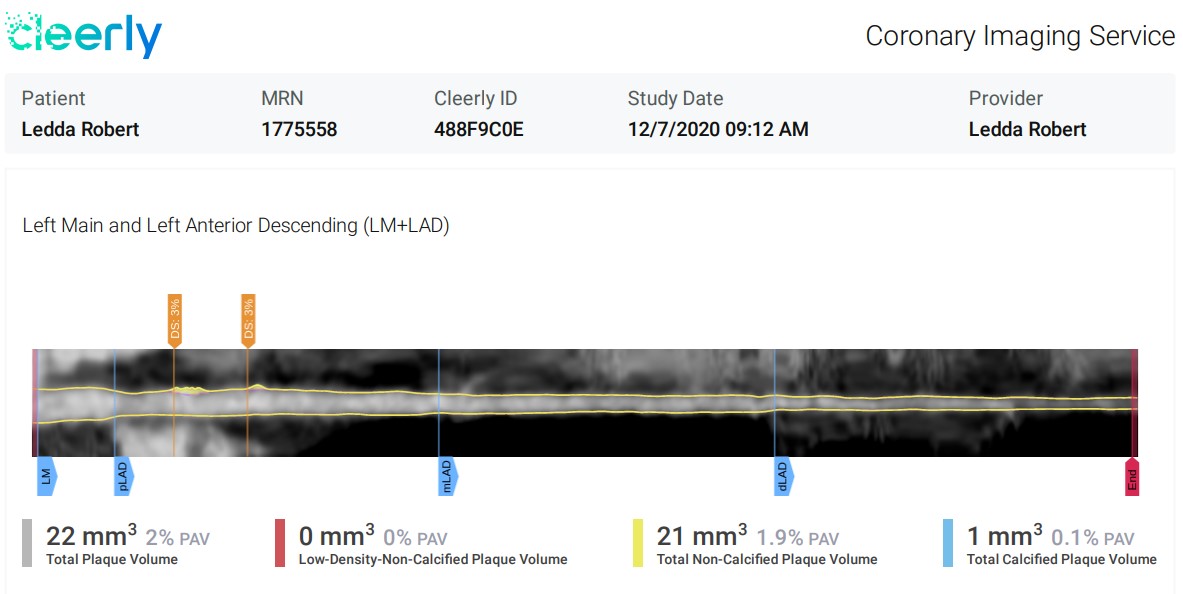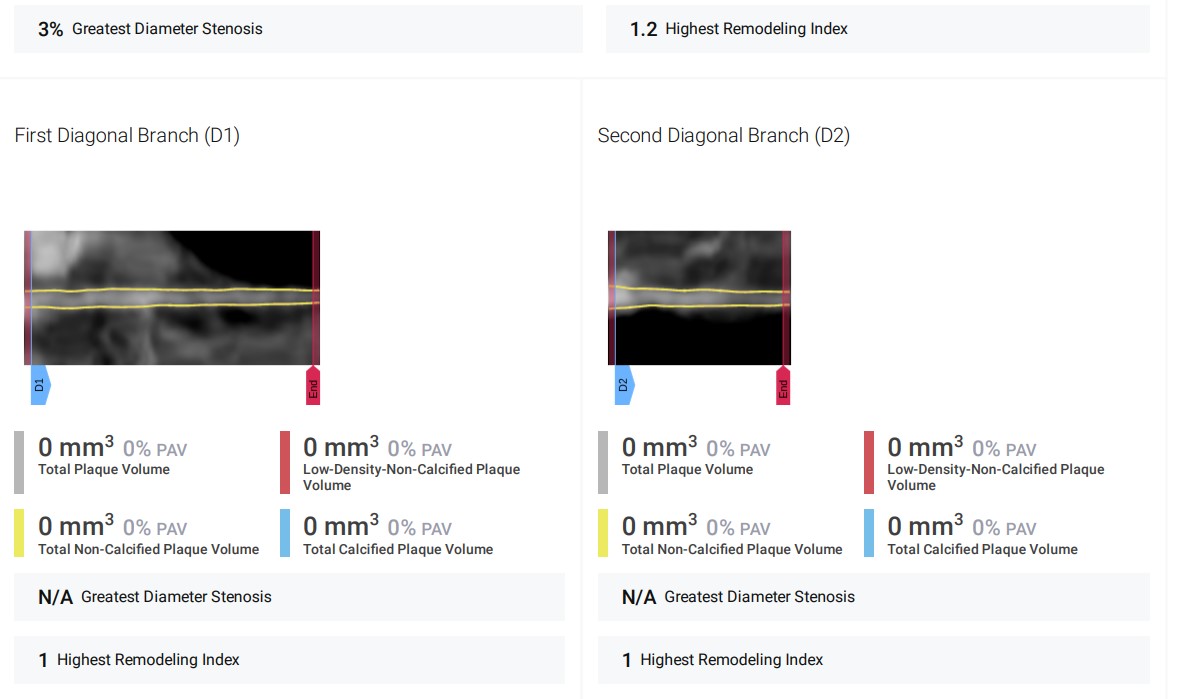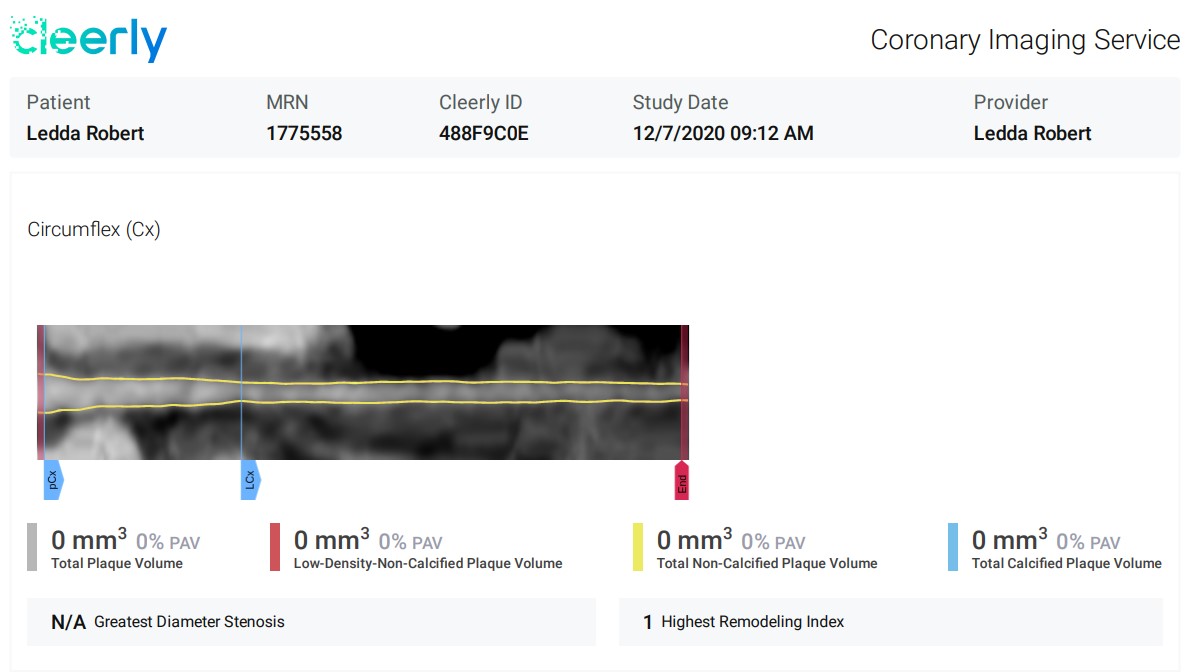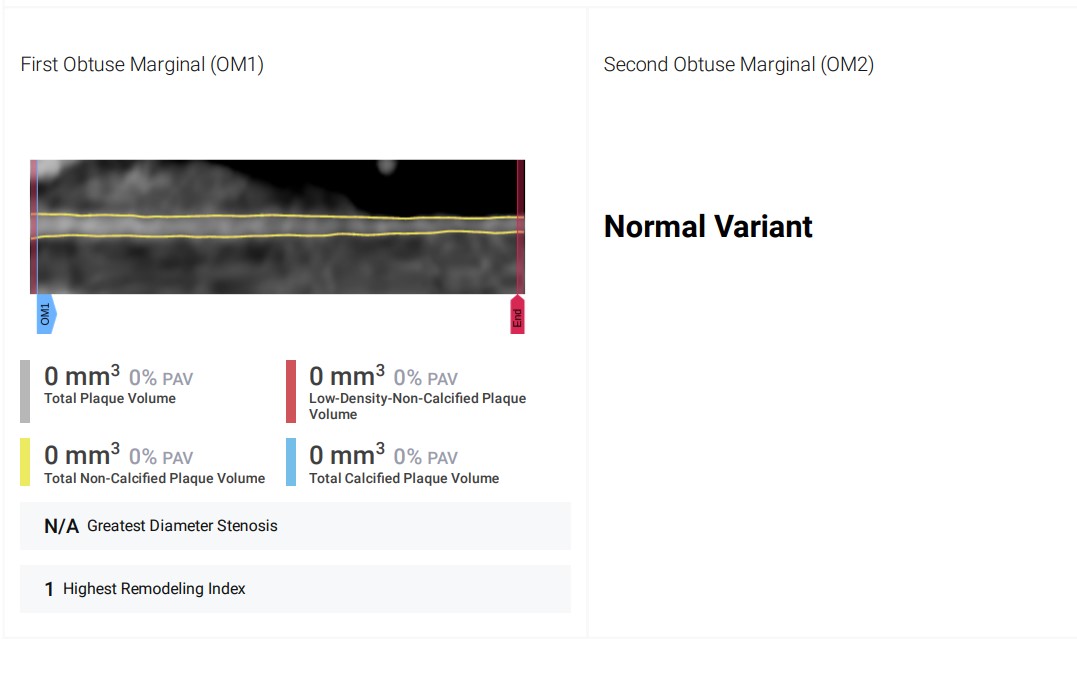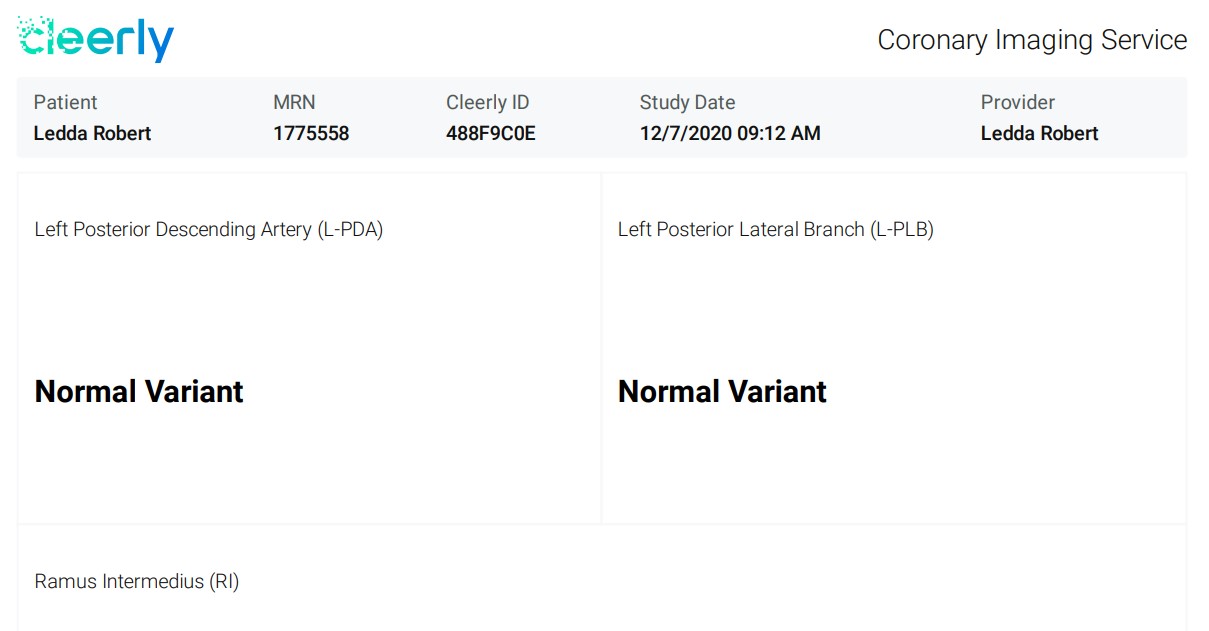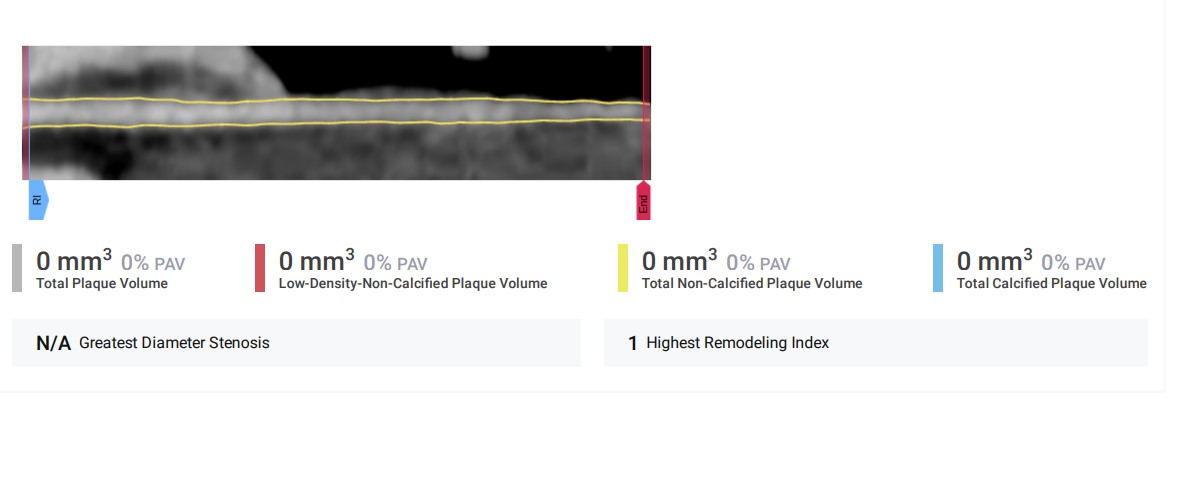Dr. Bobs Health Records
New Amsterdam Genomics Vascular Risks and Cleerly report
(CT Coronary Angiography with AI Interpretation)
Since we’re cutting to the chase in this approach, let’s go ahead and take a look at my coronary arteries after 57 years of exposure to significant genetic cardiovascular risk based on my New Amsterdam Genomics cardiovascular risk profile below. I was kind enough to open the two biggies, the ApoE4 variant that we mentioned in discussion of my DNA methylation scores, and another bad actor with regards to lipid status and cardiovascular risk, a variant of APOC3 that also makes one’s lipid profile more likely to cause cardiovascular disease. So I’ve been around at this point for 57 years at the time of my Cleerly Analysis below, with both of these genetic markers and the other red flags for increased risk of myocardial infarction and vascular disease below.
So let’s take a look at the Cleerly Analysis. Despite the fact that I had never utilized any conventional therapy for my elevated cholesterol panels (no previous statin treatment), and generally had LDL levels ranging between 120 and 160 for at least the 10 years that I’ve been monitoring them closely, I’ve virtually demonstrated almost no arterial disease in my heart. In fact, the radiologist read my angiogram as normal. No blockages. That was in 2020. Of course the use of artificial intelligence examining the same CAT scan images in much greater detail 2 years later, in December of 2022, revealed the trivial soft plaque that was not necrotic in the proximal left anterior descending artery. This revelation was enough to make me decide to start treating my lipid panel with a low-dose of a statin medication. My rationale, was I’ve been living a pretty clear and life end wouldn’t have much to add in the lifestyle domain, and at this point the combination of my lifestyle and genetics has led to the beginning of the most likely cause of death in someone who lives in an industrialized nation. Seemed like I better do some things so we’ll see how my repeat Cleerly Analysis looks in a couple of years of treatment unfortunately, I lost two years of treatment window as the Cleerly Analysis was not performed on my angiogram until two years after the radiology review which was just as reported, negative. Personalized Medicine. In the words of the Mandalorian: “This is the way!”
New Amsterdam Genomics Vascular Risks
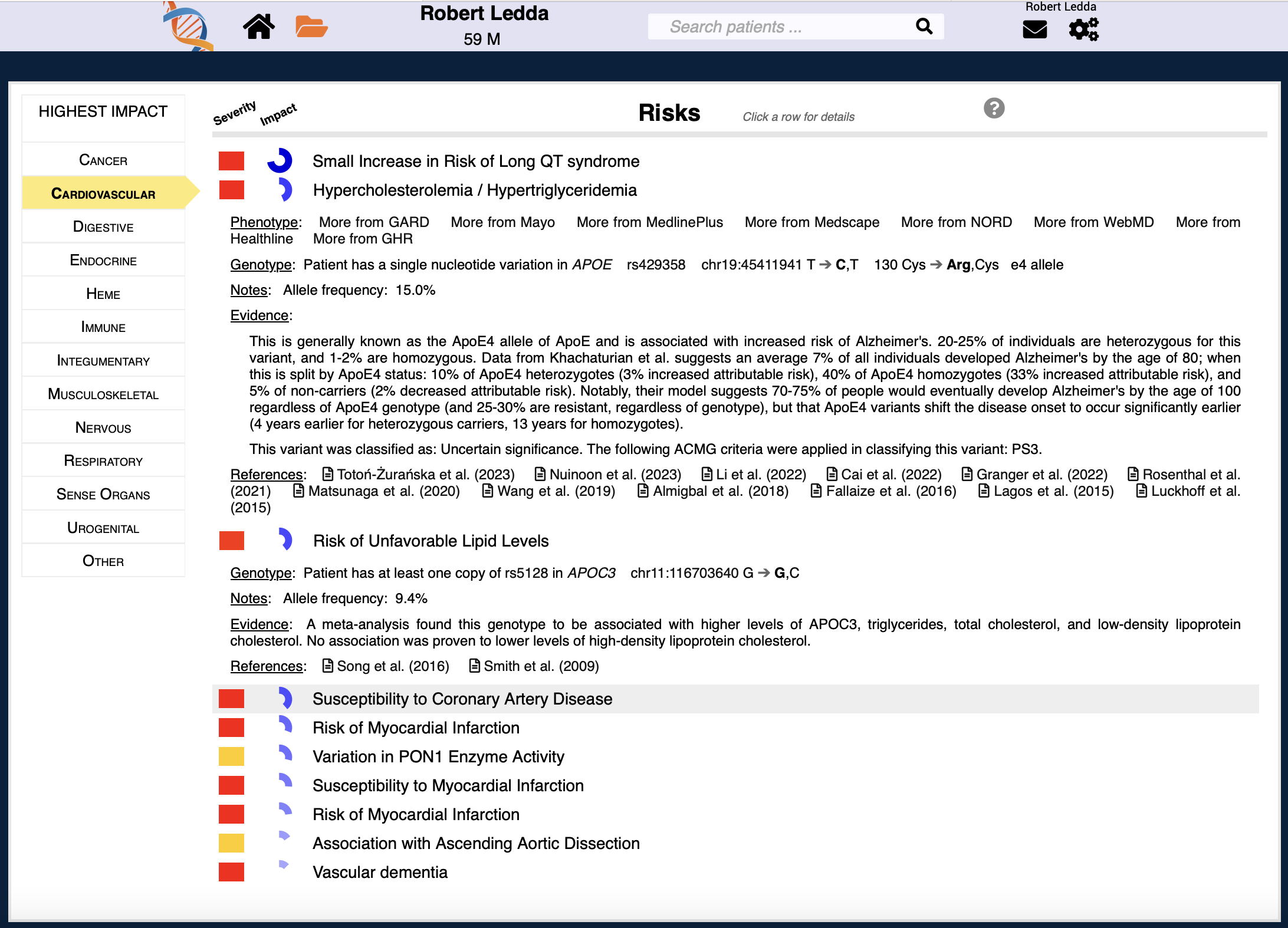
Cleerly report
(CT Coronary Angiography with AI Interpretation)
